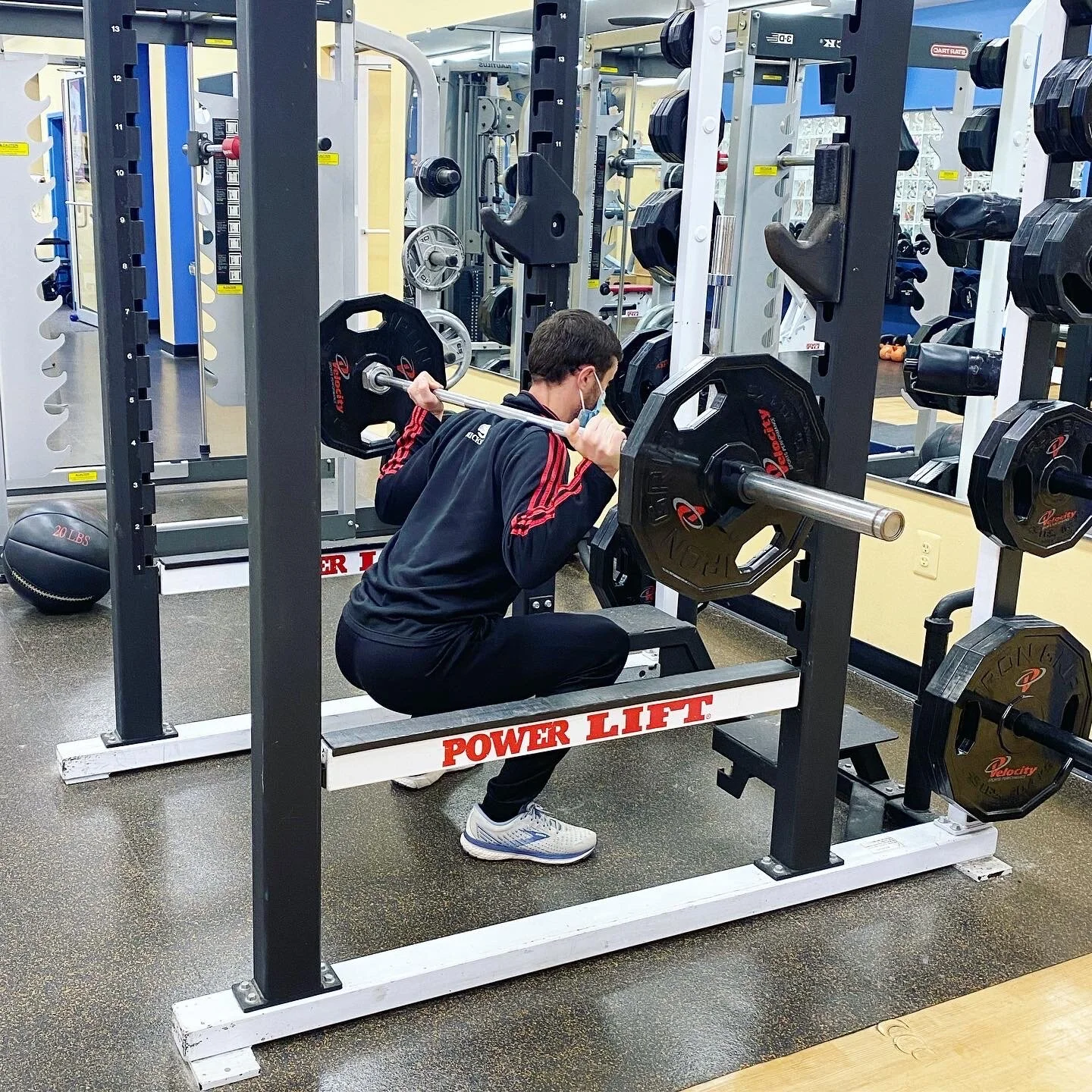The beginning of a new year is a great time to evaluate your performance from the past year and to set goals for the future. Maybe you struggled with some injuries, didn't put in enough miles or didn't cross train enough. The winter months are a great time to build a solid foundation for the Spring racing season. Winter training should include a solid mileage progression and strength training!
I first started lifting in high school as part of a regimen for track & field. For most high school student-athletes, strength training is a bit of an afterthought. After a grueling practice, you're told, 'ok boys, it's time to lift!' For those of us that didn't skip out on the lift, we were given a standard workout without much guidance from coaches on form or technique. College lifting was much different, we were given a wider variety of lifts, broken down into microcycles with specificity for event groups. Your lifting routine can only be as sophisticated as the person prescribing it and executed within your own physical restraints and abilities.
Many runners have reservations with lifting as they feel they will 'bulk' when doing too much strength training, therefore they avoid it all together. However, most running injuries are termed 'overuse injuries' and occur because the body is out of balance. This can occur because of left / right imbalances or maybe discrepancies with opposing muscle groups (i.e. calves / shins, quads / hamstrings, abdominals / lower back). If you lift like Arnold, you will bulk, but the reality is that most of us distance runners don't have the body type or the time required to build muscle like that. Running is very much a catabolic exercise, meaning there is destruction and breakdown that takes place within the muscle. It is very important to be proactive with strength training to limit the breakdown that takes place with running. On the other hand, it's also important to learn how to structure your workout cycle to maximize your recovery between exercise sessions.
If you have zero weight lifting experience, my advice is to get with a professional to guide you. The last thing you want is to get even more injured before you begin! When searching for a trainer, ask about their experience, certifications and background in sports. Researching the fancy initials behind their name will give you an idea about the prestige of their certification. With COVID-19 restrictions, many trainers are doing virtual sessions, but I would recommend a small gym or studio environment. Once you've gotten your feet wet and feel comfortable putting together a routine, you should hit the weights 3x per week.
My favorite lower body exercises include, squats, deadlifts, step-ups, single leg pistol squats & lunges. In general, I do a lower body specific lift once per week. I also make sure I do one upper body lift per week, as well as some sort of total body circuit (metabolic conditioning). In all of my workouts, I make sure I include some core strength as well. In addition, I also try to stack harder running days with strength training days. As we age, our bodies require more time to recover. Block of a period of time to do your run and your lift in the same session and take the following day off or use it to do some extra stretching or active recovery! It's extremely difficult to come back the next day after a harder lower body lift and try to do a long run or vice versa.
Good luck as you plan for 2021! I sense a lot of pent up demand for races this spring. Don't let injuries get in the way of a long anticipated marathon or 5k PR. Be proactive, be smart and build a solid foundation to chase your goals!
Eric Bofinger, CSCS

